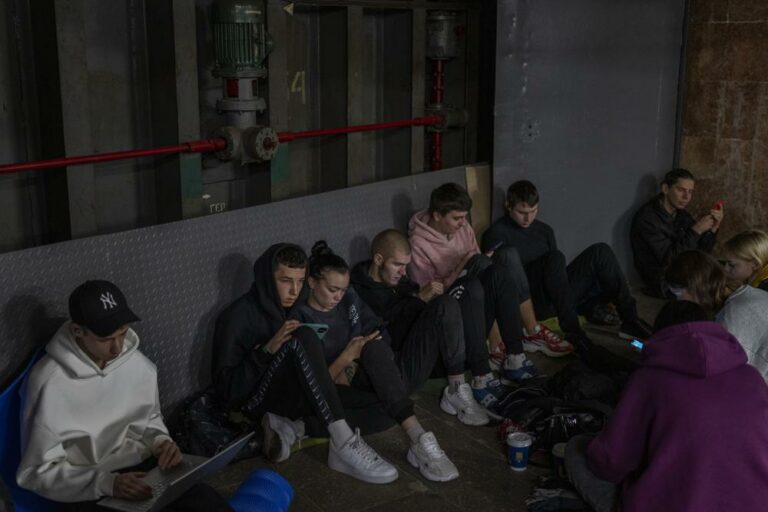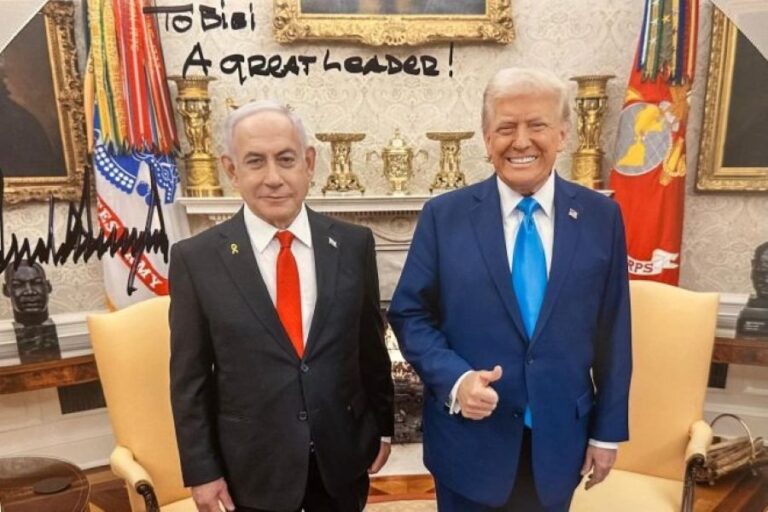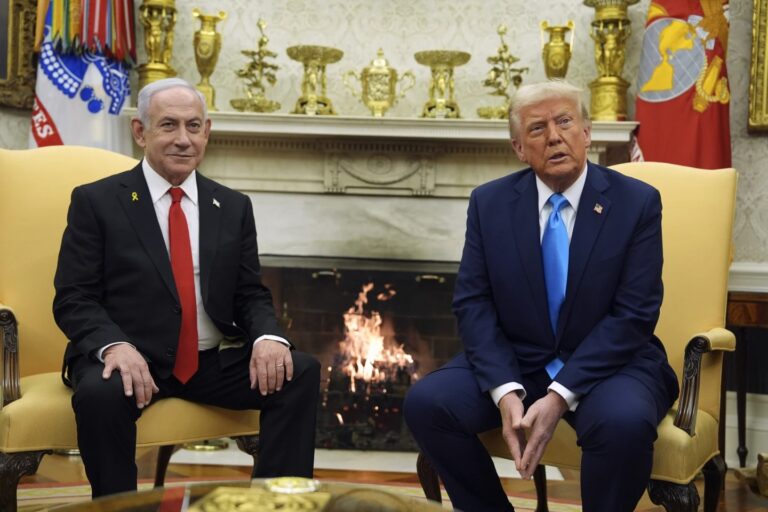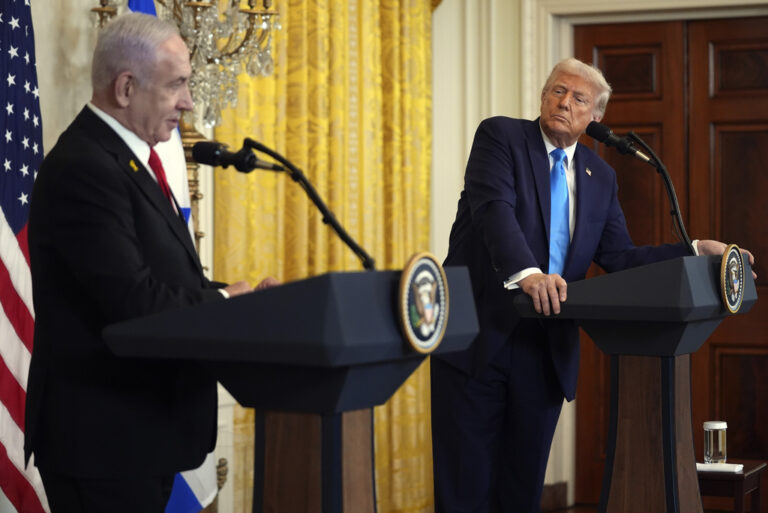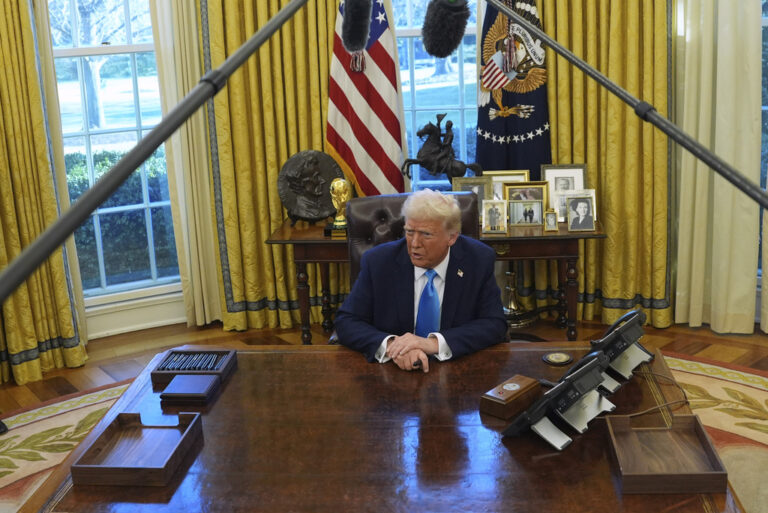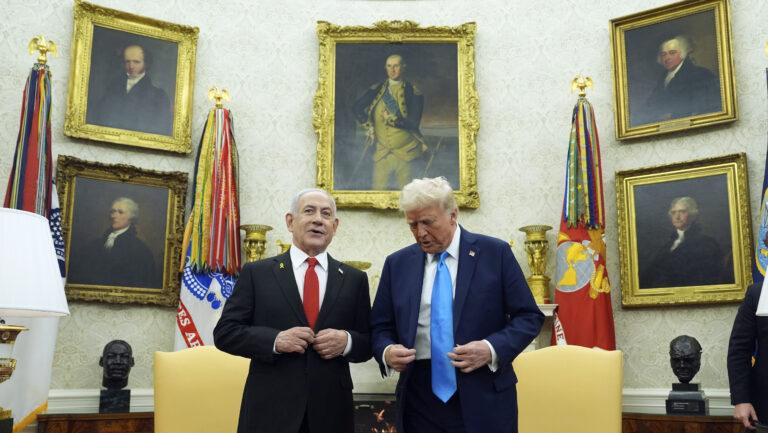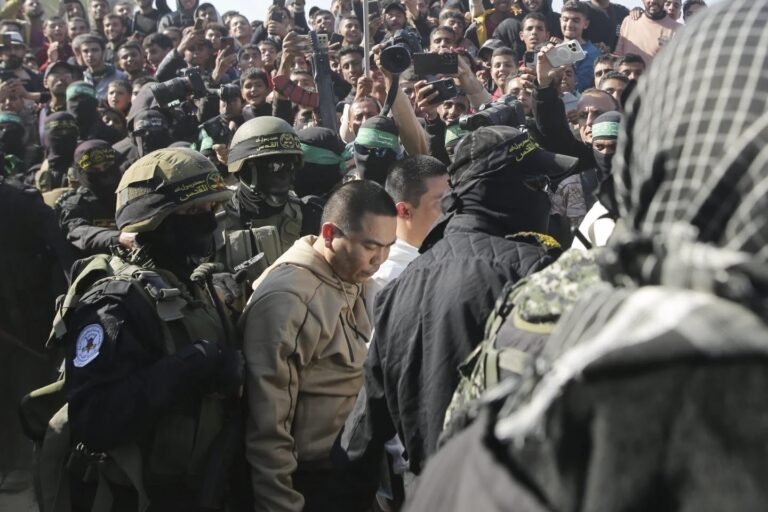Russian President Vladimir Putin ordered martial law on Wednesday for four illegally annexed Ukrainian regions, doubling down on a faltering invasion he described as “very difficult.” In a tacit acknowledgment that another stinging battlefield defeat may be unfolding, his forces organized evacuations of civilians from one of the first major cities they seized.
With a Ukrainian counteroffensive grinding toward Kherson, the battle for the southern city of more than 250,000 people, industries and a major port is a pivotal moment for Ukraine and Russia heading into winter, when front lines could become largely frozen for months.
Russia’s increasingly tenuous hold on Kherson and the wider region of the same name as well as Putin’s martial law order were more signs that the nearly 8-month-old invasion was not going as planned.
Putin acknowledged difficulties for his forces, telling a meeting of the Russian Security Council that “we are working to solve very difficult large-scale tasks to ensure Russia’s security and safe future.”
In the Kherson region, which is covered by the martial law order, Ukrainian forces have rolled back Russian positions on the west bank of the Dnieper River. By pulling civilians out of the region’s main city, which backs onto the river, and fortifying positions there, Russian forces appear to be hoping that the wide, deep waters will serve as natural barrier against the Ukrainian advance.
What had previously been a trickle of evacuations from the city in recent days became a flood. Russian state television showed residents crowding on the Dnieper’s banks, many with small children, to cross by boats to the east — and, from there, deeper into Russian-controlled territory.
Russia has said the movement of Ukrainians to Russia or Russian-controlled territory is voluntary, but in many cases, they have no other routes out and no other choice.
There have been reports in the war of forced deportations, and an Associated Press investigation found that Russian officials deported thousands of Ukrainian children to be raised as Russian.
In Kherson, Russian authorities played up fears of an attack on the city, seemingly to persuade residents to leave. Text messages warned residents to expect shelling, Russian state media reported.
One resident reached by phone described columns of military vehicles leaving the city, Moscow-installed authorities scrambling to load documents onto trucks, and thousands of people lining up for ferries and buses.
“It looks more like a panic rather than an organized evacuation. People are buying the last remaining groceries in grocery shops and are running to the Kherson river port, where thousands of people are already waiting,” the resident, Konstantin, said. The AP is withholding his family name, as he requested, for his safety.
“Mostly it’s the pro-Russian officials, state employees, families with children and the elderly who are fleeing,” he said. “People are scared by talks of explosions, missiles and a possible blockade of the city.”
Leaflets told evacuees that they could take the weight equivalent of two large suitcases, medicine and food for a few days.
Andriy Yermak, head of the Ukrainian presidential office, called the evacuation “a propaganda show” and said Russia’s claims that Kyiv’s forces might shell Kherson were “a rather primitive tactic, given that the Armed Forces do not fire at Ukrainian cities.”
Ukrainian military analyst Oleh Zhdanov said the operation could be a pre-cursor for intense fighting and “the harshest” tactics from Russia’s new commander for Ukraine, Gen. Sergei Surovikin.
“They are prepared to wipe the city from the face of the Earth but not give it back to the Ukrainians,” Zhdanov said in an interview. ”The Russians want to show that Ukraine’s counteroffensive will run into a harsh response from the Kremlin, which has declared these territories a part of Russia, and it’s scary to even think about what that response might look like.”
In a rare acknowledgement of the pressure that Kyiv’s troops are exerting, Surovikin himself this week described the situation for his forces in the Kherson region as “very difficult.” Russian bloggers interpreted the comments as a warning of a possible pullback by Moscow’s forces.
Kherson is one of four partly or fully-occupied regions that Putin illegally annexed last month. Western nations universally condemned and rejected his effort to cement Russia’s land-grabs.
Putin didn’t immediately spell out the powers that martial law would grant. But they could include restrictions on travel and public gatherings, tighter censorship and broader powers for law enforcement agencies.
In a potentially ominous move, Putin’s order also opens the door for restrictive measures to be extended across Russia. That may lead to an even tougher crackdown on dissent in Russia, where authorities have quickly dispersed anti-war protests and jailed many under new legislation that criminalizes any statements or information about the fighting that differs from the official line.
Proving incapable of holding all the territory it has seized and struggling with manpower and equipment losses, Russia has stepped up bombardments from the air, with a scorched-earth campaign targeting Ukrainian power plants and other key infrastructure.
Those tactics contrast with the Kremlin’s strategy in the invasion’s opening stages in February, when Russian commanders had seemingly sought to spare some utilities they perhaps thought they might later need.
But after being routed from around the capital, Kyiv, and then pushed back in the south and east by the ongoing Ukrainian counteroffensive launched in late summer — backed by Western-supplied weapons — Moscow is now increasingly resorting to targeting energy infrastructure, threatening a miserable winter for millions of Ukrainians.
Ukrainian President Volodymyr Zelenskyy tweeted Tuesday that nearly a third of the country’s power stations have been destroyed since Oct. 10, causing “massive blackouts.”
Zelenskyy urged Ukrainians to make “a very conscious” effort to save power, speaking before another night where substations and other infrastructure were pounded.
Overnight shelling knocked out power and water in some parts of Enerhodar, Mayor Dmytro Orlov said. The southern city is next to the Zaporizhzhia Nuclear Power Plant, which is one of the most worrisome flashpoints of the war.
Missiles severely damaged an energy facility in the region of Kryvyi Rih, a city in south-central Ukraine, the regional governor reported. He said the strike cut power to villages, towns and to one city district.
Western nations have promised more air-defense systems — and a newly arrived German-supplied system is already deployed —for Ukraine to counter the aerial assault that is testing the resilience Ukrainians have shown since Moscow invaded.
Across Ukraine, Russian strikes killed at least six civilians and wounded 16 in the latest 24 hour-period, the president’s office said Wednesday. It said Russian forces attacked nine southeastern regions of Ukraine using drones, rockets and heavy artillery, focusing on energy facilities.
(AP)

